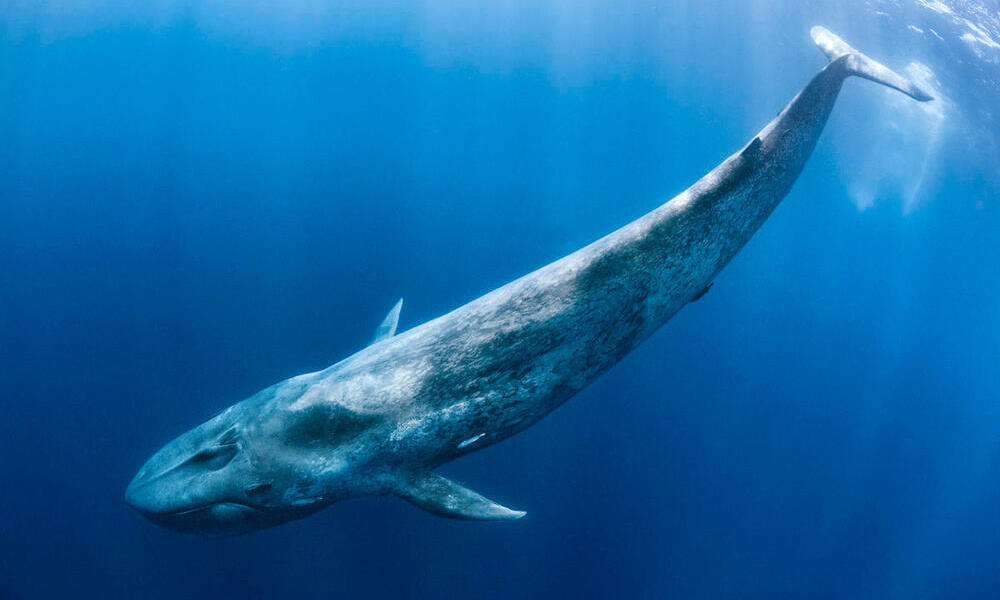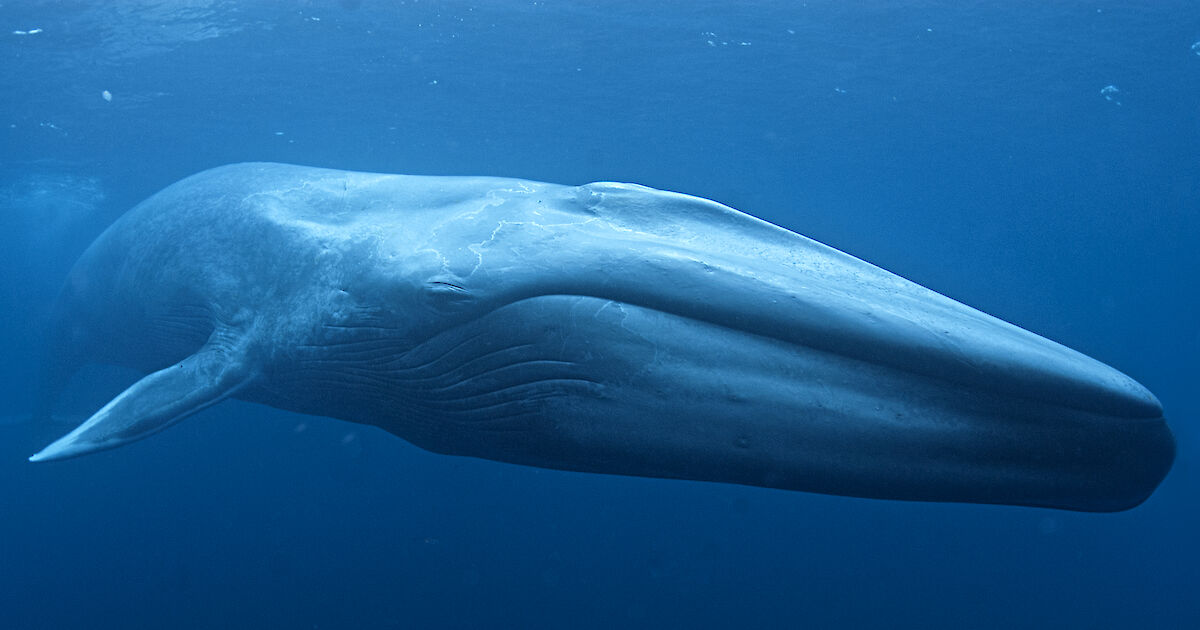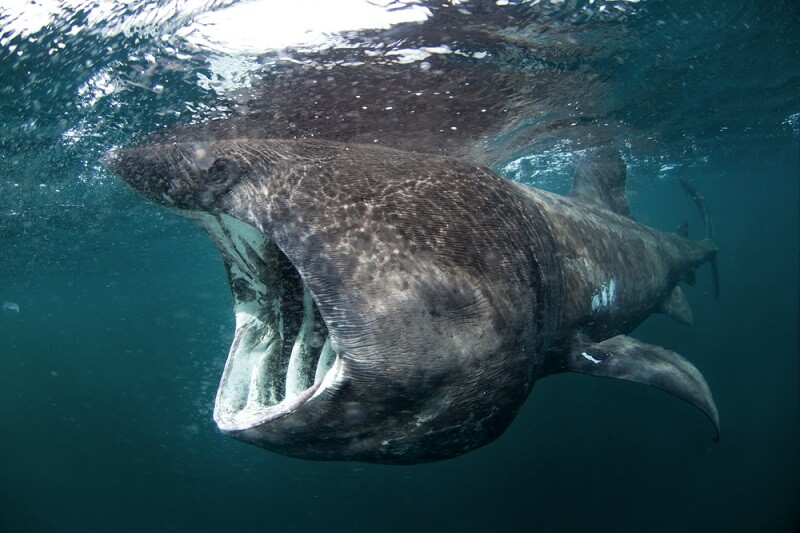The animal kingdom is full of fascinating creatures, from the tiniest insects to the largest mammals. In this article, we will explore the top 10 heaviest animals in the world. While some of these animals may be obvious, others may surprise you. From the massive blue whale to the mighty African bush elephant, these animals are true powerhouses of nature.
So, let’s dive in and discover the incredible weight of these magnificent creatures.
You are reading: Top 10 Heaviest Animals In The World

Blue whale (Balaenoptera musculus) swims beneath the surface of the ocean. Indian Ocean, off Sri Lanka.
Top 10 Heaviest Animals In The World
Blue Whale

The blue whale is the largest animal known to have ever existed on Earth. According to, it can reach a maximum confirmed length of 29.9 meters (98 ft) and weigh up to 219 tons.
The weight of a blue whale can vary depending on factors such as age, sex, and subspecies. In the Northern Hemisphere, males weigh an average of 100 metric tons (220,000 lb) and females 112 metric tons (247,000 lb).
Eastern North Pacific blue whale males average 88.5 tonnes (195,000 lb) and females 100 tonnes (220,000 lb). Antarctic males average 112 tonnes (247,000 lb) and females 130 tonnes (290,000 lb).
Pygmy blue whale males average 83.5 tonnes (184,000 lb) to 99 tonnes (218,000 lb). The blue whale’s long and slender body can be of various shades of greyish-blue dorsally and somewhat lighter underneath. It has four subspecies recognized: B. m. musculus in the North Atlantic and North Pacific, B. m. intermedia in the Southern Ocean, B. m. brevicauda (also known as the pygmy blue whale) in the Indian Ocean and South Pacific Ocean, and B. m. indica in the northern Indian Ocean.
The favorite food of these gentle giants is krill, or small shrimp-like animals.
Plankton Feeding Shark

Plankton feeding sharks are a unique group of sharks that feed by filtering water through their gills to capture plankton, small fish, and other tiny organisms. While baleen whales are known to be the biggest animals on Earth that feed on plankton, there are three species of shark that consume plankton: the whale shark, the basking shark, and the megamouth shark.
The basking shark is the second-largest fish in the world and one of the three species of plankton-eating sharks. They are filter feeders and their diets are composed primarily of plankton, some of the ocean’s smallest organisms. To eat, they swim with their mouths wide open and allow water to pass through, filtering as many as 2,000 tons of water per hour.
Baleen whales and basking sharks are not the only animals that feed on plankton, but they are among the biggest animals that eat these small creatures.
African Bush Elephant
The African bush elephant, also known as the African savanna elephant, is the largest living terrestrial animal and one of the three extant elephant species. They can reach a shoulder height of up to 3.96 m (13 ft 0 in) and a body mass of up to 10.4 t (11.5 short tons).
African bush elephants are herbivores and spend much of their days foraging and eating grass, leaves, bark, fruit, and a variety of foliage. They need to eat about 350 pounds of vegetation every day.
The African bush elephant occurs in sub-Saharan Africa, including Uganda, Kenya, Tanzania, Botswana, Zimbabwe, Namibia, Zambia, and Angola, and moves between a variety of habitats, including subtropical and temperate forests, dry and seasonally flooded grasslands, woodlands, wetlands, and agricultural land from sea level to mountain slopes. In Mali and Namibia, it also inhabits desert and semi-desert areas.
Read more : Discover The Top 6 Most Expensive Types Of Koi Fish
The African bush elephant is the largest land mammal in the world and can live up to 70 years.
Hippopotamus
The hippopotamus, also known as the “river horse,” is a large semiaquatic mammal native to sub-Saharan Africa. It is the third-largest living land mammal, after elephants and white rhinos. The hippopotamus has a bulky body on stumpy legs, an enormous head, a short tail, and four toes on each foot. Its name comes from the ancient Greek for “river horse” (ἱπποπόταμος).
Despite their physical resemblance to pigs and other terrestrial even-toed ungulates, the closest living relatives of the hippopotamids are cetaceans (whales, dolphins, porpoises, etc.), from which they diverged about 55 million years ago.
Hippos are herbivores and spend much of their time in the water, feeding on short, soft grasses and fallen fruit. They have very thick skin that is virtually hairless except for the thick bristle-like hair on their heads and tails. The outer layers of skin are quite thin, making them prone to wounds from fighting.
Hippos are known for their enormous teeth, aggressive nature, and the myth that they sweat blood. They are also known to be territorial and can be dangerous to humans.
Rhinoceros
Rhinoceros, commonly abbreviated to rhino, is a member of any of the five extant species of odd-toed ungulates in the family Rhinocerotidae. Two of the extant species are native to Africa, and three to South and Southeast Asia.
The word rhinoceros is derived through Latin from the Ancient Greek: ῥῑνόκερως, which is composed of ῥῑνο- (rhino-, “nose”) and κέρας (keras, “horn”) with a horn on the nose.
The five species of rhino in the world are the black rhino, white rhino, Sumatran rhino, Javan rhino, and greater one-horned rhino. The black and white rhinos are native to Africa, while the other three species are found in Asia. Rhinos are herbivores and have a diet that consists of grasses, leaves, shoots, and fruits.
Rhinos are known for their distinctive horns, which are made of keratin, the same material as human hair and nails. Rhinos are also known for their endangered status due to poaching for their horns, which are highly valued in traditional medicine and as a status symbol.
Elephant Seal
Elephant seals are very large, oceangoing earless seals in the genus Mirounga. There are two species of elephant seals: the northern elephant seal (M. angustirostris) and the southern elephant seal (M. leonina). Both species were hunted to the brink of extinction for oil by the end of the 19th century, but their numbers have since recovered.
Elephant seals are the largest extant carnivorans, weighing up to 5,000 kilograms (11,000 lb). The northern elephant seal is the second-largest seal in the world, after the southern elephant seal. Adult males are 14 to 16 feet (4 to 5 m) in length and 4,000 to 5,000 pounds (1,400 to 2,300 kg) in weight. The females are much smaller at about 9 to 12 feet (2.5 to 4 m) in length and weigh 900 to 1,800 pounds (400 to 800 kg).
Elephant seals are marine mammals classified under the order Pinnipedia, which, in Latin, means feather- or fin-footed. Elephant seals are considered true seals and fall under the family Phocidae. They are shielded from extreme cold more by their blubber than by fur. Their hair and outer layers of skin molt in large patches, and the skin has to be regrown by blood vessels reaching through the blubber.
Elephant seals are more agile in their ocean environment and move on land with considerable effort, by using their front flippers and belly.
Walrus
The walrus is a large pinniped marine mammal that is found in the Arctic Ocean and subarctic seas of the Northern Hemisphere. It is the only extant species in the family Odobenidae and genus Odobenus and is subdivided into two subspecies: the Atlantic walrus and the Pacific walrus.
Here are some interesting facts about the walrus:
– Walruses have wrinkled brown and pink skin, long, coarse whiskers, flat flippers, and lots of blubber on their bodies to keep them warm in the cold Arctic water.
– They can slow down their heartbeat to withstand the chilly water temperatures and to help them stay underwater for as long as ten minutes.
– Their whiskers are very sensitive and help the walruses find their favorite meals, such as clams, way down in the deep, dark ocean floor.
– Walruses use their iconic long tusks for a variety of reasons, such as hauling their enormous bodies out of frigid waters, breaking breathing holes into ice from below, and fighting to establish dominance hierarchies.
– Walruses are foraging predators that feed on a variety of bottom invertebrates, including shellfish, worms, crabs, and perhaps some fishes.
– They may also scavenge carcasses of large marine mammals.
– As they are very large, walruses have few natural predators, but polar bears and killer whales are known to occasionally attack them.
– The conservation status of the walrus is currently unknown, but during the 18th and 19th centuries, commercial hunting resulted in substantial reductions in the overall number of walruses.
Giraffe
The giraffe is a large African mammal that belongs to the genus Giraffa. It is the tallest living terrestrial animal and the largest ruminant on Earth.
Read more : Discover 10 Types Of Black Beetles
Giraffes were traditionally thought to be one species, Giraffa camelopardalis, with nine subspecies, but recent research has proposed dividing them into up to eight extant species based on new research into their mitochondrial and nuclear DNA, as well as morphological measurements.
Giraffes are classified by the International Union for Conservation of Nature (IUCN) as vulnerable to extinction and have been extirpated from many parts of their former range. Here are some interesting facts about giraffes:
– Giraffes are the world’s tallest mammals, thanks to their towering legs and long necks.
– A giraffe’s legs alone are taller than many humans—about 6 feet.
– These long legs allow giraffes to run as fast as 35 miles an hour over short distances and cruise comfortably at 10 miles an hour over longer distances.
– Typically, giraffes roam the open grasslands in small groups of about half a dozen.
– Giraffes use their height to good advantage and browse on leaves and buds in treetops that few other animals can reach (acacias are a favorite).
– Giraffes have a unique cardiovascular system that prevents fainting when they raise their heads, lower them, or swing them quickly.
– Giraffes’ “horns” are actually knobs covered with skin and hair above the eyes that protect the head from injury.
– Giraffe tails are highly prized by many African cultures and are used in good-luck bracelets, fly whisks, and even thread for sewing or stringing beads.
– The number of giraffes in the wild is shrinking as their habitats shrink, and they are easily killed by poachers.
– Giraffes grow about 4 feet (1.2 meters) in their first year of life and can live up to 25 years in the wild.
Saltwater Crocodile
The saltwater crocodile, also known as the estuarine crocodile or “salty,” is a crocodilian species that is native to saltwater habitats, brackish wetlands, and freshwater rivers from India’s east coast across Southeast Asia and the Sundaic region to northern Australia and Micronesia.
Here are some interesting facts about saltwater crocodiles:
– Saltwater crocodiles are the largest living reptiles on Earth, with males reaching up to 23 feet (7 meters) in length and weighing up to 2,200 pounds (1,000 kilograms).
– Females are significantly smaller, with the average female saltwater crocodile measuring a little under 10 feet (3 meters) in length and weighing less than 220 pounds (100 kilograms).
– Saltwater crocodiles are named for their ability to survive in full salinity seawater and typically live in brackish (low salinity) water near the coast.
– They are excellent swimmers and have often been spotted far out at sea.
– Saltwater crocodiles are opportunistic predators and will feed on anything they can get their jaws on, including water buffalo, monkeys, wild boar, and even sharks.
– They are known for their aggressive nature and have been responsible for numerous attacks on people and livestock each year.
– Saltwater crocodiles have few natural predators, but they have been hunted for many decades by people for their eggs, meat, and valuable skin.
– Saltwater crocodiles reproduce via internal fertilization, and females carefully look over their nests after laying a clutch of approximately 50 eggs.
– Saltwater crocodiles are classified as vulnerable to extinction by the International Union for Conservation of Nature (IUCN) and have been extirpated from many parts of their former range.
– They are recognized for the important role they play in the ecosystem and are a protected species.
Kodiak Bear
The Kodiak bear, also known as the Kodiak brown bear or the Alaskan brown bear, is a subspecies of the brown bear that inhabits the Kodiak Archipelago in southwest Alaska.
Here are some interesting facts about the Kodiak bear:
– The Kodiak bear is one of the largest recognized subspecies or populations of the brown bear and one of the two largest bears alive today, the other being the polar bear.
– Kodiak bears have been isolated from other bear populations for about 12,000 years, making them a unique subspecies of the brown or grizzly bear.
– There are about 3,500 Kodiak bears, with a density of about 0.7 bears per square mile.
– Kodiak bears can be nearly as large as polar bears and include the largest brown bears on record.
– A large male Kodiak bear can stand over 10 feet tall on his hind legs and 5 feet on all fours, and a weight of 1,648 pounds was listed for one male in the Journal of Mammalogy.
– Females are about 20 percent smaller and 30 percent lighter than males.
– Kodiak bears are omnivores and have a diet that includes berries, grasses, sedges, roots, and tubers, as well as fish, small mammals, and carrion.
– Kodiak bears have interacted with humans for centuries, especially hunters and other people in the rural coastal regions of the archipelago.
– The bears are hunted for sport and are encountered by hunters pursuing other species, and less frequently, Kodiak bears are killed by people whose property or person are threatened.
– In recent history, there has been an increasing focus on conservation and protection of the Kodiak bear population as human activity in its range increases.
FAQS
1. What is the heaviest animal in the world?
The heaviest animal in the world is the blue whale, which can weigh up to 219 tons.
2. What is the largest land animal in the world?
The largest land animal in the world is the African bush elephant, which can weigh up to 10.4 tons.
3. What is the largest living reptile in the world?
The largest living reptile in the world is the saltwater crocodile, which can weigh up to 2,200 pounds.
4. What is the largest living carnivore on land?
The largest living carnivore on land is the polar bear, which can weigh up to 1,500 pounds.
5. What is the largest living bear species?
The Kodiak bear is the largest living bear species, with males reaching up to 1,648 pounds.
6. What is the heaviest living mammal?
The heaviest living mammal is the blue whale, which can weigh up to 219 tons.
7. What is the heaviest living land mammal?
The heaviest living land mammal is the African bush elephant, which can weigh up to 10.4 tons.
8. What is the heaviest living reptile?
The heaviest living reptile is the saltwater crocodile, which can weigh up to 2,200 pounds.
9. What is the heaviest living bird?
The heaviest living bird is the ostrich, which can weigh up to 320 pounds.
10. What is the heaviest living fish?
The heaviest living fish is the ocean sunfish, which can weigh up to 5,000 pounds.
Source: https://petstutorial.com
Category: Animals










